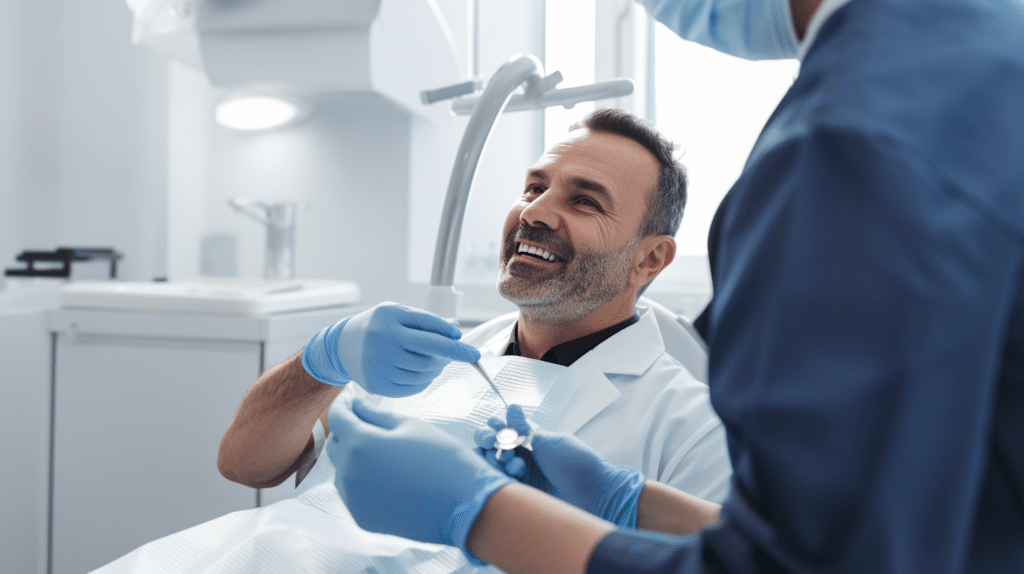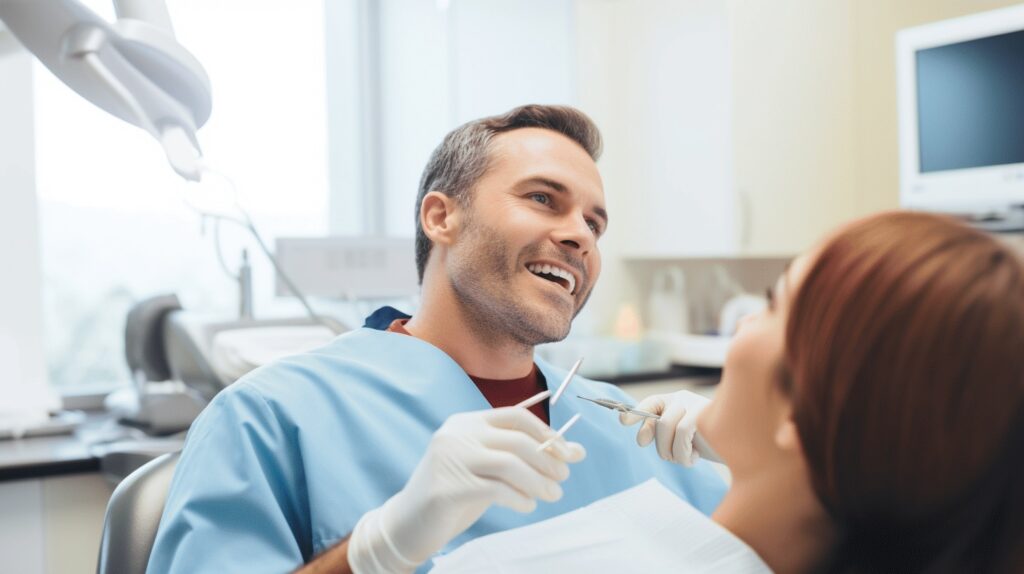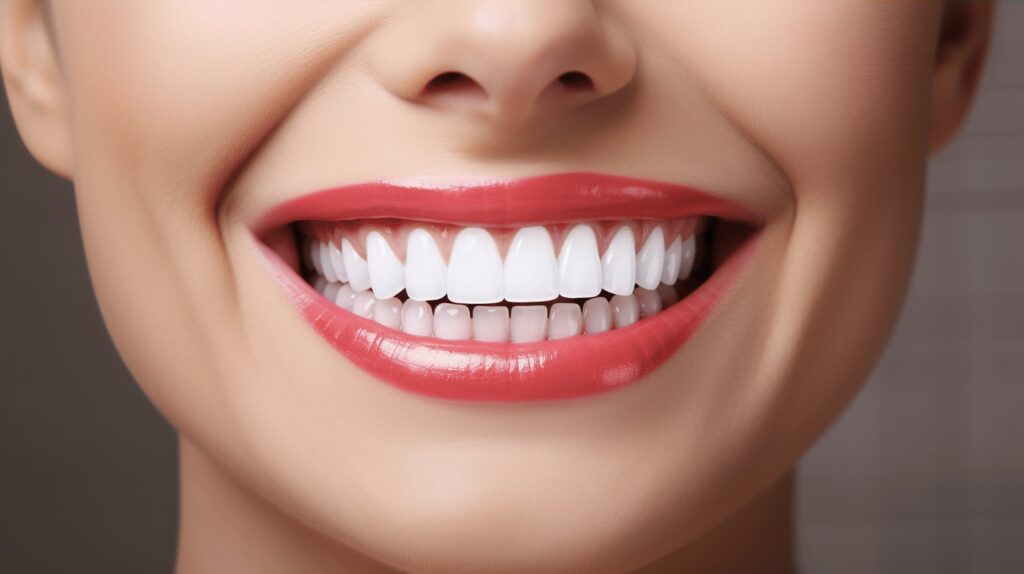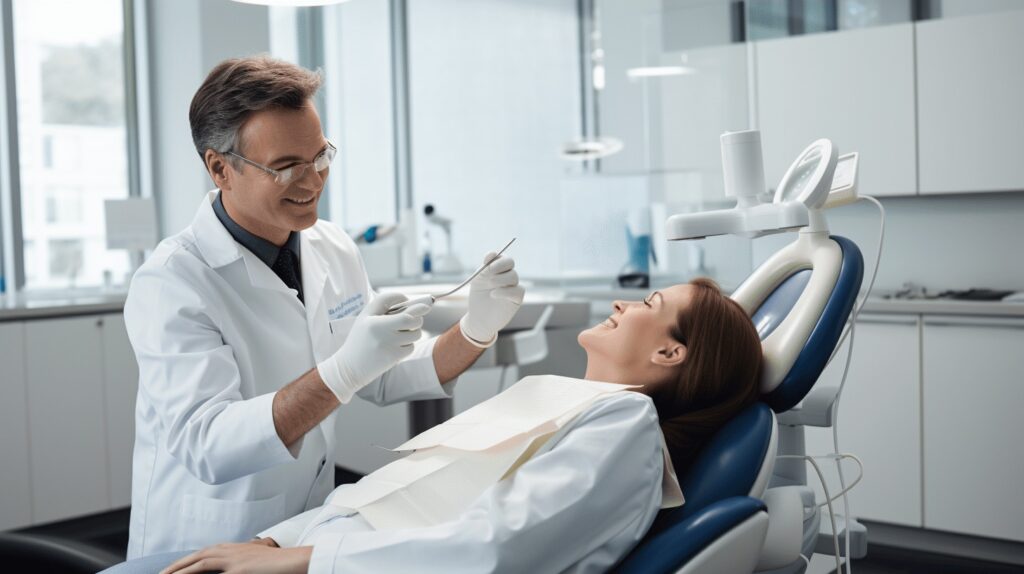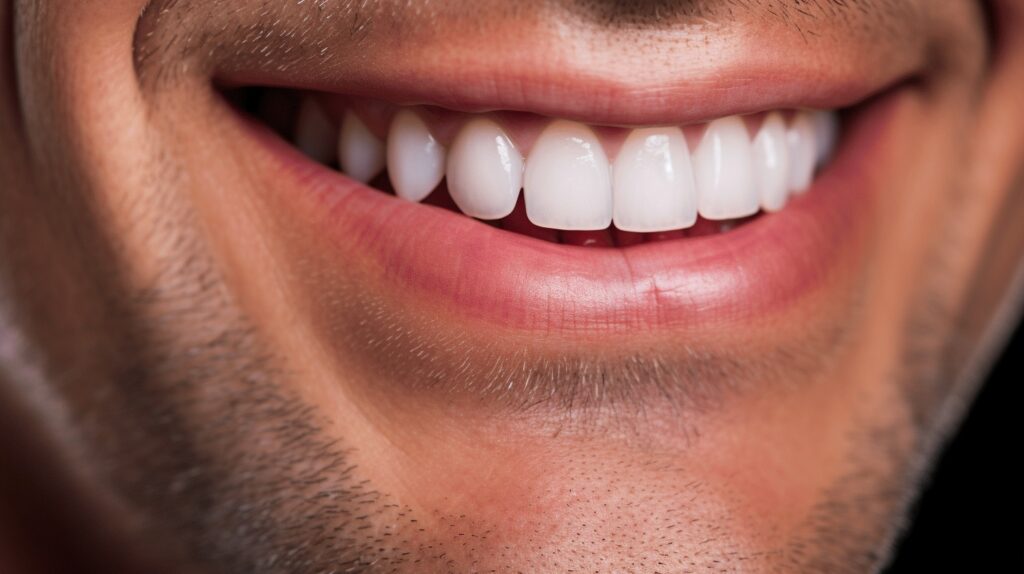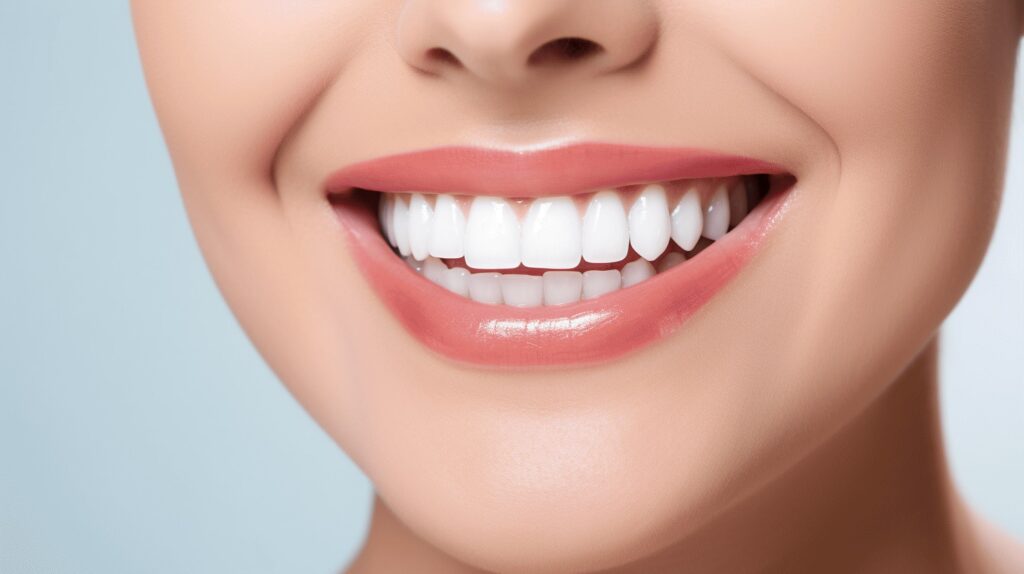With smiles that can brighten a gloomy day, we all fancy dazzlers in our mouths dental check up. But there’s a lot that happens behind those pearly whites we all admire. Our oral health narrative goes beyond brushing twice a day or visiting our dear dentists when a toothache arises.
Here, we delve into a realm often overlooked yet immensely powerful in dentistry— the practice of preemptive dentistry. This proactive approach to dental health is aimed at nipping any prospective oral health issue in the bud before it blossoms and takes a worrisome toll on you. With advances in dental science, this winking emoji of modern dentistry is revolutionizing our oral health, presenting us with a promise of stronger, healthier teeth, and yes, the Instagram-worthy smiles!
Let’s delve further and explore why prevention is indeed better than cure, especially when it comes to your teeth. 😊
Table of Contents
Understanding Preemptive Dentistry
Preemptive dentistry is a fundamental concept that aims to establish and maintain strong and healthy teeth. This dentistry practice revolves around preventing dental diseases before they even occur. It’s less about fixing problems and more about stopping them from developing in the first place.
Imagine a world where instead of treating cavities, we avoid their formation. A world where our children grow up without ever experiencing toothache, gum disease, or the need for braces. Impossibly idealistic? Not if you understand preemptive dentistry. 😊
Basic Concept and Importance
Preemptive dentistry is built around the principles of early detection, intervention, and prevention of potential oral diseases before they necessitate complicated treatments. Its basic theory says it’s better to prevent a dental issue than to treat it.
The importance of preemptive dentistry lies in its cost-effectiveness and long-term benefits:
- Health benefit: With preemptive dentistry, the chances of developing dental diseases can be significantly reduced, promoting overall oral health.
- Cost-effectiveness: It enables you to avoid high-cost treatments like root canals, extractions, or dental implants that could be needed in case of severe tooth decay or gum disease.
- Time-saving: Preemptive dental care can save you time since preventive treatments tend to be quicker and simpler than restorative procedures.
“A stitch in time saves nine,” as the old adage goes, perfectly encapsulates why preemptive dentistry is the future of oral health.
Dental Check Up – Modes of Approach
The modes of approach in preemptive dentistry are simple and often easy to incorporate into our daily routine:
- Regular dental check-ups: These help identify any emerging dental issues and take early preventive measures to avoid their worsening.
- Good oral hygiene practices: This includes daily brushing and flossing, usage of a proper toothbrush, fluoride toothpaste, and maintaining a healthy diet.
- Dental sealants and fluoride treatments: Offered by your dental practitioner, these services can help protect your teeth and prevent the onset of decay.
Naturally, each person’s journey in preemptive dentistry would differ based on their oral health needs. But, starting early, consistent oral maintenance, and regular visits to the dentist could set you on the right path.
At the heart of it, understanding that the power to prevent dental disease is in our hands makes us recognize the sheer potential of preemptive dentistry. And remember, a healthy smile is always in style! 😊
Preventive Techniques in Dentistry
When it comes to safeguarding your radiant smile, prevention is always better than cure. In dentistry, this sentiment rings true as ever. Preventative dental care techniques are essential not only for maintaining the health of your teeth but also for your overall wellbeing. Here’s a dive into some techniques that aid in preventing dental issues.
Regular Check-ups
Our first piece of advice? Never skip your dental check-ups! 📅 Show up routinely for the check-ups. This constant visibility allows your dentist to detect any early signs of cavities or gum diseases. And yes, catching these orally occurring nuisances in their budding stages means easier treatment and lower costs. Also, regular professional cleaning is indispensable to avoid tartar build-up and to keep your teeth shining. 😁
Proper Oral Hygiene
We cannot stress enough the importance of maintaining proper oral hygiene at home. It starts with the basics:
- Regular brushing (at least twice a day)
- Flossing daily to remove food particles that brushing can’t reach
- Using an antimicrobial mouthwash for an added layer of protection
Meticulously practicing these steps ensures oral cleanliness and largely reduces the risk of gum diseases and decay. 🦷
Dental Sealants
Have you heard about dental sealants? They’re protective shields placed over the surfaces of your back teeth (molars) to prevent decay. Dental sealants are especially beneficial for children and teenagers prone to cavities, acting as a strong defense barrier against decay. Plus, the procedure of application is simple and painless. Ask your dentist on the next visit. 💺
Nutrition and Diet
Your diet significantly impacts your oral health. Consuming a balanced diet rich in vitamins, minerals, and low on sugars can go a long way in maintaining good dental health. Cutting back on sugary drinks, snacks, and encouraging calcium-rich foods aid in strengthening the teeth.
Remember, teeth-friendly is body-friendly! 🥦🥕
Fluoride Treatments
Fluoride treatments play a vital role in preventive dentistry. They strengthen the tooth enamel, making it more resistant to acid attacks causing tooth decay. Most toothpaste brands and some water supplies contain fluoride, but getting professional fluoride treatments from your dentist provides better protection.🦷💪
Preventive dental care forms the backbone of maintaining oral hygiene and health. Implement these techniques and enjoy the advantages of a healthy, vibrant smile! A stitch in time saves nine, and proactive dental care safeguards your pearly whites. Don’t wait until it’s too late; start practicing preventive dentistry today.
Dental Check Up – Major Dental Issues and Their Preventions
Tooth Decay and Cavities
Ah, the all too familiar and dreaded cavity, but what exactly is it? Tooth decay begins when the bacteria in your mouth produce acids that eat away at your tooth (sounds pretty grim, we know! 😣). Over time, this can lead to holes in the tooth, commonly known as cavities. But fear not! Here are some preventive measures you can take:
- Eat a healthy diet – Yep, mom was right! Eating a balanced diet not only keeps your body in shape but also helps in maintaining good dental health.
- Regular brushing and flossing – This is the simplest way to avoid tooth decay. It removes plaque, which is the primary cause of tooth decay.
- Regular dental check-ups – Don’t underestimate the value of a regular dental check-up, it could save you from all kinds of toothy troubles!
Periodontal Disease
Periodontal disease, or gum disease, is an infection of the gums surrounding the teeth. It’s a major cause of tooth loss in adults. Signs of periodontal disease can be as subtle as gum swelling or as severe as tooth movement. Guarding against this cloaked enemy isn’t tough though:
- Cleaning between your teeth – Do this daily to remove those hidden particles and plaque.
- Maintain a healthy diet – We see a pattern here 🤔. Yes! A healthy diet does wonders for your oral health.
Oral Cancer
Here’s an issue you probably didn’t see coming – Oral Cancer. This terrifying condition claims numerous lives yearly due to late diagnosis. The key to overcoming this dental demon is early detection. Alarm bells should ring if you notice:
- Constant pain in the mouth
- Long-lasting sores in the mouth
- Difficulty in swallowing
If you spot any of these signs, waste no time in booking an appointment with your dentist.
There we have it, some of the major dental issues you may face, and how to combat them head-on. Remember folks, taking all the mentioned preventive actions and going for regular dental check-ups can save you from a world of oral pain, both physically and financially. So, don’t think twice! Make your oral health a priority, and keep smiling 😊.
Influence of Prevention on Overall Health
With current trends in health recommendations gravitating towards preventive measures, it becomes increasingly clear how vital this aspect is in maintaining a healthy lifestyle. When we think about our wellbeing, most of us picture a visit to the doctor or hospital only when something has gone amiss. However, preventing health complications before symptoms even arise can be game-changing to our overall health. Let’s explore this in detail – how prevention can lower the risk of oral diseases, its impact on general health, and its cost-effectiveness.
Lower Risk of Oral Diseases
Remember the poignant sayings from childhood, “An apple a day keeps the doctor away” and “Prevention is better than cure”? Well, there’s a hidden wisdom to these words, reminding us that it’s often easier to stop something happening in the first place than to repair the damage after it has happened, especially when it comes to oral health.
Practicing good dental hygiene, such as regular brushing, flossing, and routine dental check-ups can help:
- Prevent tooth decay
- Protect against gum diseases
- Avoid bad breath
- Halt the development of oral cancer
- Shun the loss of teeth or corrective dentistry in your later years
“Prevention and education are the keys to a lifetime of good oral health” – Dr. Sullivan, American Dental Association
Dental Check Up – Impact on General Health
A proactive stance on prevention doesn’t only benefit our oral health. Good general health starts with good oral health; Unknown to many, chronic oral infections can lead to grave health challenges, including heart disease, stroke, and diabetes. A regular preventive dental examination can reveal signs of nutritional deficiencies, improper jaw alignment and general infection, thus kick-starting a timely intervention and a pathway to overall wellbeing.
| Oral Condition | Associated General Health Conditions |
|---|---|
| Gum disease | Heart Disease, Stroke |
| Tooth decay | Diabetes, Respiratory Disease |
| Oral infections | Nutritional Deficiencies, Alzheimer’s |
Cost-effectiveness
Finally, a word on the cost-effectiveness of preventive care. A lifetime of clean and healthy teeth not only results in smile-filled family photos, but also does wonder for your wallet. A preventive care routine could be as simple as brushing and flossing twice a day and getting regular dental check-ups. These preventive measures are considerably less expensive than the cost of treatment measures for diseases caused by neglect.
🦷 Taking care of your teeth = Taking care of your wallet 🦷
By focusing on preventive care, we are not only investing in our health but also ensuring that we do not have to spend exorbitantly on treatments. Keep your smiles bright, your health on point, and your bank balance healthy – Prevention is the magic formula!
Role of Dentists and Patients in Preemptive Dentistry
In the evolving world of dentistry, prevention has taken a significant spot beneath the spotlight. Less invasive than treatment, more affordable, and generally better for overall oral health, preventive dentistry is a shared responsibility between dentists and their patients. Both play indispensable roles to steer the ship of a healthy smile towards the shores of wellbeing. Let’s dive in and map out these roles, shedding light on both dentists’ duties and patients’ obligations.
Dental Check Up – Education and Awareness by Dentists
A significant chunk of preventive dentistry starts in the dental chair. Dentists and dental hygienists are primarily responsible for educating their patients – not just about potential dental issues, but also on the benefits of good oral hygiene.
- Regular check-ups: Dentists inform their patients about the importance of regular visits and check-ups, that could potentially nip a budding dental problem in the bud.
- Correct techniques: Proper brushing and flossing techniques are explained and demonstrated, ensuring patients know the ‘how-to’ of dental care.
- Nutritional advice: Dietary advice plays a crucial role in preventive dentistry. A balanced diet is key to keeping harmful bacteria and plaque at bay.
- Custom solutions: Dentists introduce tailor-made solutions like mouth guards for sports professionals or grinding issues, suggesting preventive measures that cater to individual needs.
“An ounce of prevention is worth a pound of cure,” this applies perfectly to dental health, where early detection often means less complicated treatment.
Dental Check Up – Patient’s Responsibility
Though dentists are the driving force behind preventive dentistry, the teeth’s wellbeing ultimately hinges on the patient. Patient’s role revolves around:
- Proper oral care: Adopting the right brushing and flossing techniques at home, as taught by their dentist.
- Healthy diet: Ensuring a balanced diet rich in calcium and low in sugar to keep teeth and gums healthy.
- Breaking bad habits: Avoiding oral health-compromising habits like smoking and excessive alcohol.
- Responsive action: Being responsive to their dentist’s advice, be it about regular visits, dental devices or any preventive measures suggested.
A winning smile is not a one-man show; it’s a collaborative effort. 😁
Regular Dental Visits
Regular dental visits are the linchpin of preventive dentistry 💼. They allow dentists to catch issues in the bud and offer advice relevant to the patient’s needs.
In addition to the initial education, regular appointments allow for:
- Professional cleaning: Dental hygienists perform professional cleanings to remove any plaque or tartar build-up that regular brushing might miss.
- Timely intervention: X-rays and other diagnostic tests identify areas of decay, damage, or potential issues before becoming major problems.
- Continuous education: Regular visits offer an opportunity for ongoing education and awareness about any new preventive care products or techniques.
“Regular dental visits are an investment, not an expense. They ensure a healthy mouth and can save your pocket from costly dental treatments in the future.”
In summary, preventive dentistry is a two-way street, with both patients and dentists having an equal share. The harmony between the knowledge and advice provided by dentists, and the action and responsibility taken by patients, results in smiles that are not just happier but healthier.
Dental Check Up – Future of Preemptive Dentistry
Once upon a time, confronting a drill-wielding dentist was the stuff of nightmares. 😱 Nowadays, with the advent of modern preventive dentistry, we’re ushering in a revolution in dental care. Preemptive Dentistry, also known as preventive dentistry, focuses on taking care of your pearly whites now to prevent problems in the future. As we strut into the 21st century, let’s explore the future of this proactive approach to dental care.
Dental Check Up – Emerging Preventive Technologies
From the tech-savvy techniques to the innovative procedures, dentistry is becoming smarter and more efficient than ever. It’s not just about filling cavities anymore! Here’s a look at the exciting preventive technologies that are set to redefine dentistry in the future:
- AI-powered diagnostics: Artificial Intelligence is transforming the dental landscape. AI algorithms can help detect dental diseases way before the symptoms appear, facilitating immediate remedial action. 😁
- 3D printing: A revolutionary game-changer, 3D printing enables custom-made dental implants – a perfect fit, every time.
- Improved imaging: High-resolution imaging techniques, like digital X-rays and intraoral scanners, offer a detailed view of the oral cavity, paving the way for improved diagnosis and better preventive measures.
- Tele-dentistry: This technology allows for virtual consultations, which are especially helpful in reaching rural communities with limited access to dental care. This dynamic shift is bound to leave a significant impact, making dental care more accessible and affordable!
“The future of dentistry is not only about innovation but also making dental care patient-centric!”
Changes in Patient’s Attitude – Dental Check Up
Changing technologies are not the only factors influencing the future of preventive dentistry. The attitudes and perceptions of patients are playing an equally important role. 👥
- Increased awareness: As patients become more educated about oral health, there’s a shift from ‘problem-based visits’ to ‘routine check-ups’.
- Focus on aesthetics: There’s a growing demand for procedures that not only improve oral health but also enhance appearance.
- Going Green: The preference for eco-friendly dental practices is gaining traction. More and more patients are opting for clinics that have lesser environmental impact.
In essence, it seems like the future of preemptive dentistry is not just about high-tech gadgetry, but also about a paradigm shift in patient outlook. 🚀
The future of preemptive dentistry is here, folks, and it looks promising! Say ‘cheese’ to a future where cavities are a thing of the past, where dental visits are stress-free, and maintaining a healthy smile is the norm. 😄
Remember, the key to a bright, healthy smile is prevention. So, let’s embrace these advances, and take strides into a future where dental care is proactive, and every grin is a healthy one!
No drill, wheels or deals, but just healthy smiles all the way. Ready to embrace the future of dentistry? We sure are! 🙌
Dental Check Up – Conclusion
In essence, dentistry is not just about filling cavities or performing root canals. It’s a comprehensive practice aimed at ensuring your mouth remains a healthy component of your overall wellbeing. The predictive, preventive, and personalized measures incorporated into modern dental practices have carved out a promising path towards achieving this goal, and this is what preemptive dentistry is about.
The role of dentists and patients alike is critical in making preemptive dentistry work. While dentists, like our team at Wilshire Smile Studio, continuously upgrade their knowledge and techniques, instilling awareness and following up with patients, it’s also up to patients to heed these preventive measures for a healthier smile.
In the near future, with advancements in technology, personalized care, and patient’s increased awareness about preventive care, we see preventive dentistry not as an option but an essential part of oral care routine. Investments made today, whether in gift-of-the-gab education or handy fluoride treatments, will be reaping benefits for a lifetime.
Given the disruption caused by the pandemic, now, more than ever, is the time to be proactive rather than reactive. So, remember, the power of prevention trumps the dread of the dental drill. At Wilshire Smile Studio, we’re ready to help you on this journey, one healthy smile at a time!
Book your free consultation with us online or call (323) DENTIST (323-336-8478) today.
Frequently Asked Questions
1. What are preemptive strikes in dentistry?
Preemptive strikes in dentistry refer to proactive measures taken to prevent dental problems before they occur. This includes regular dental check-ups, cleanings, and preventive treatments like fluoride application and dental sealants.
2. Why is prevention important in dentistry?
Prevention is crucial in dentistry because it helps avoid dental issues such as cavities, gum disease, and tooth loss. By practicing good oral hygiene and receiving preventive care, patients can maintain optimal oral health and prevent costly and painful dental procedures in the future.
3. What are some common preemptive strikes in dentistry?
Common preemptive strikes in dentistry include regular brushing and flossing, using fluoridated toothpaste, receiving dental cleanings and exams, practicing a healthy diet, avoiding tobacco and excessive alcohol consumption, and getting dental sealants and fluoride treatments.
4. At what age should preemptive strikes in dentistry start?
Preemptive strikes in dentistry should start as early as infancy. Parents should start cleaning their baby’s gums with a soft cloth and transition to brushing with a small, soft-bristled toothbrush as soon as the first tooth erupts. Regular dental check-ups should also begin around the age of one.
5. How often should I visit the dentist for preemptive strikes?
It is recommended to visit the dentist at least twice a year for preemptive strikes. Regular dental check-ups and cleanings help identify any potential issues early on and allow for timely treatment. However, the frequency may vary depending on individual dental needs, so it’s best to consult with your dentist.


